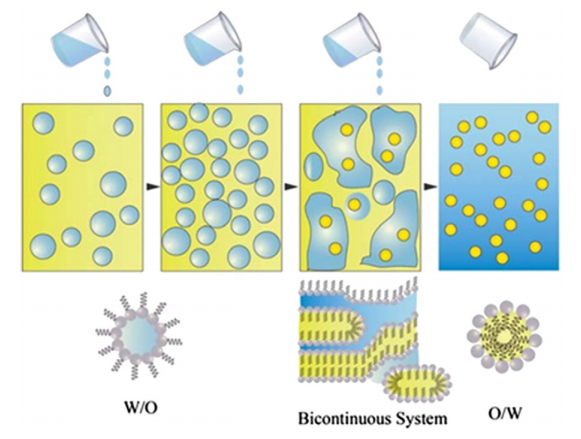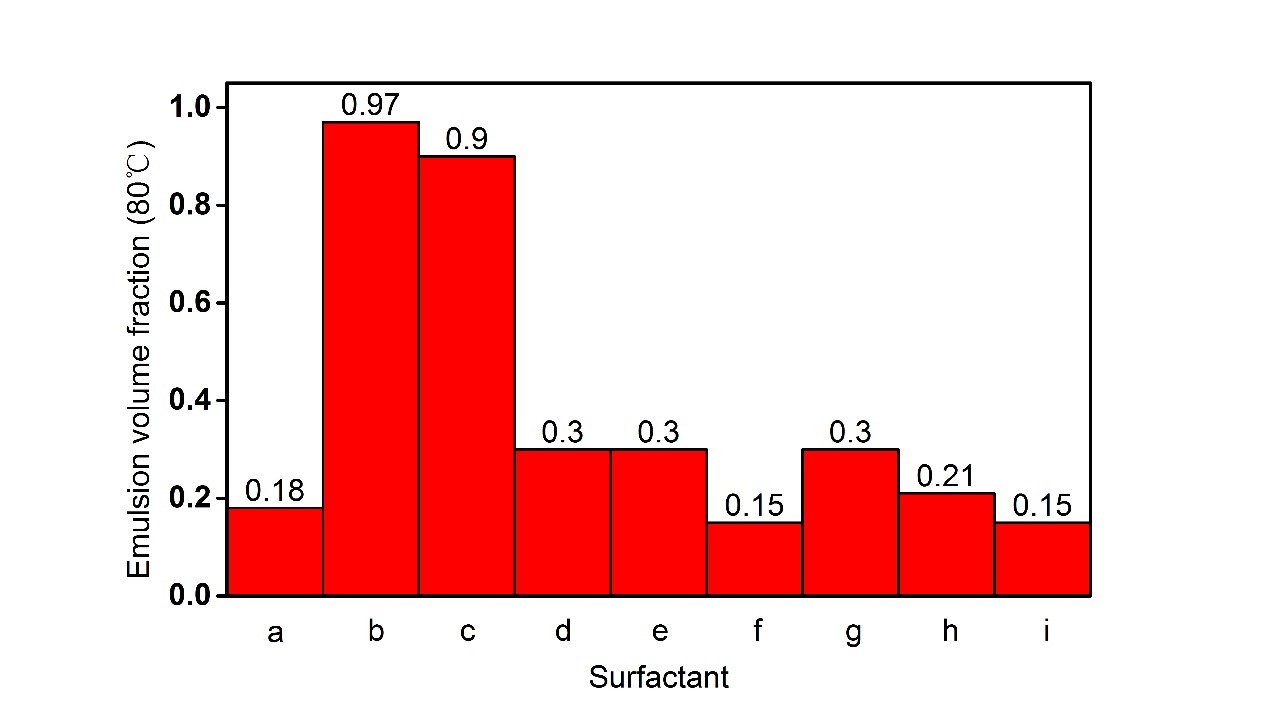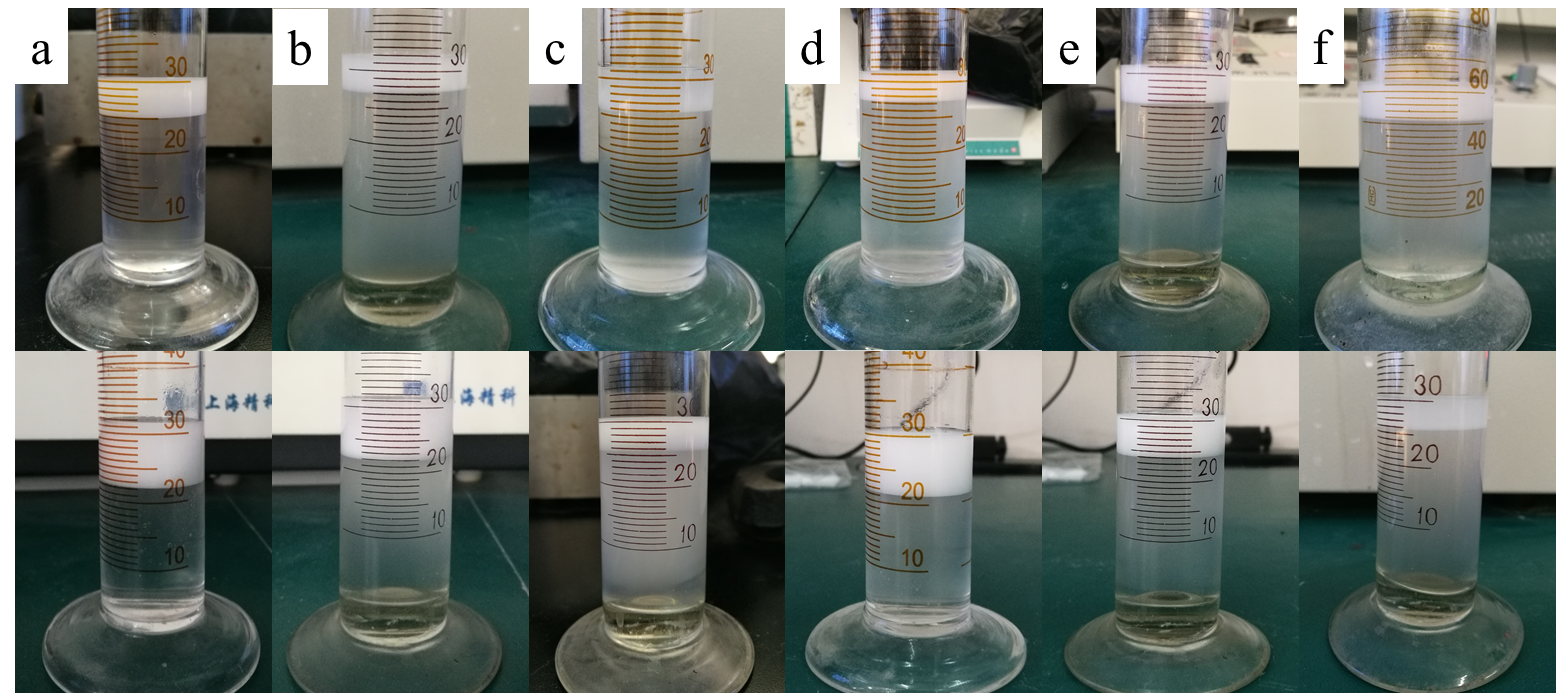水性脱模剂的制备及性能研究毕业论文
2021-12-09 17:32:47
论文总字数:21065字
摘 要
水性脱模剂是脱模剂的一类,它以乳化后的基本材料分散在水中,涂覆在模具上发挥脱模效果,具有无毒、无污染、低成本等特性,在如今混凝土等领域的成模脱模中具有重要应用价值。本文选用甲基硅油作为基本材料,旨在探索其水性脱模剂的最佳制备工艺,并用于混凝土、水泥砂浆等材料的成模脱模,减少环境污染,保护模具,保证产品质量。
为了制备乳液性能稳定的水性脱模剂,本文首先对六种备选的非离子表面活性剂,采用HLB法,即亲水亲油平衡法,进行两两复配,利用转相乳化法分别在40℃与80℃温度下进行磁力搅拌制备乳液,初步选取出稳定性较好的表面活性剂种类与温度条件。
为了进一步提高乳液稳定性,着重对其乳化温度、表面活性剂配比、表面活性剂用量及硅油总含量进行变量实验,对乳液的放置稳定性、分散性、离心稳定性等进行测试评估,得到乳液稳定性最好的硅油乳液,最后进行水泥砂浆成模脱模效果评估,并测试水泥试块的抗压强度。
本文成功制备出乳液稳定性优良、脱模效果好的水性脱模剂,主要表现在:①放置稳定性:在20℃环境中放置72小时后,不分层,乳液占总体积百分数达到100%;②流动性:流动性好,易于均匀成膜;③分散性:分散性等级达到一级,具有良好水溶性,易于稀释;④离心稳定性:在3000r/min离心速度下离心30min,不分层,不漂油;⑤储存稳定性:将乳液在20℃环境下放置60天,没有明显破乳分层现象;⑥脱模效果:水泥试块表面完整且平整,模具表面整洁度高,且对水泥试块抗压强度影响小。
关键词:硅油乳液;转相乳化法;HLB值;乳液稳定性;脱模效果
Abstract
Water-based release agent is a type of release agent. It is dispersed in water with the emulsified basic material and coated on the mold to exert the release effect. It has the characteristics of non-toxic, pollution-free and low cost. It has important application value in mold release. This article selects methyl silicone oil as the basic material, in order to explore the best preparation process of its water-based release agent, and is used for the mold release of concrete, cement mortar and other materials to reduce environmental pollution, protect the mold, and ensure product quality.
In order to prepare an aqueous release agent with stable emulsion performance, this article first uses the HLB method, that is, the hydrophilic-lipophilic balance method, to prepare six alternative nonionic surfactants. Emulsions were prepared by magnetic stirring at 40 ° C and 80 ° C, and the types and temperature conditions of surfactants with good stability were initially selected.
To further improve the stability of the emulsion, the variable temperature experiment of the emulsification temperature, the ratio of the surfactant, the amount of the surfactant, and the total content of the silicone oil was carried out, and the stability, dispersion, and centrifugal stability of the emulsion were tested and evaluated. The silicone oil emulsion with the best emulsion stability is finally evaluated for the effect of mold release from cement mortar, and the compressive strength of the cement test block is tested.
This article successfully prepared a water-based release agent with excellent emulsion stability and good mold release effect, which is mainly manifested in: ①Stability: after standing for 72 hours at 20 ℃, it does not delaminate, and the emulsion accounts for 100% of the total volume. ② Fluidity: good fluidity, easy to form a uniform film. ③ Dispersibility: the level of dispersibility reaches a level, has good water solubility, easy to dilute. ④ Centrifugal stability: centrifugation at 3000r / min centrifugation speed for 30min, with no delamination or oil bleaching. ⑤ Storage stability: the emulsion is left at 20 ° C for 60 days without obvious demulsification and delamination. ⑥ Demolding effect: the surface of the cement test block is complete and flat, and the surface cleanliness of the mold is high, with little effect on the compressive strength of cement test blocks.
Keywords: silicone oil emulsion; phase inversion emulsification method; HLB value; emulsion stability; demolding effect
目 录
摘 要 I
Abstract II
第1章 绪论 1
1.1 课题研究背景及意义 1
1.2 脱模剂与水性脱模剂概述 1
1.2.1脱模剂的定义与分类 1
1.2.2 水性脱模剂的定义与特点 1
1.3 水性脱模剂的脱模机理与脱模过程 2
1.3.1 水性脱模剂的脱模机理 2
1.3.2 水性脱模剂的脱模过程 2
1.4水性脱模剂制备工艺的选择 3
1.4.1 基础材料的选择 3
1.4.2 表面活性剂的选择 4
1.4.3 乳化方法的选择 6
1.5研究的主要内容 7
第2章 表面活性剂的复配 8
2.1实验试剂与仪器 8
2.2实验方法 8
2.2.1 表面活性剂的复配 8
2.2.2 转相乳化法制备乳液 9
2.2.3 乳液稳定性的初步测试 10
2.3 结果与讨论 10
2.3.1 表面活性剂复配组合的选择 10
2.3.2 温度对乳液稳定性的影响 11
2.4 小结 12
第3章 乳液制备工艺的优化 13
3.1实验试剂与仪器 13
3.2实验方法 13
3.2.1 改变乳化温度制备乳液 13
3.2.2 改变表面活性剂配比制备乳液 14
3.2.3 改变表面活性剂用量制备乳液 14
3.2.4 改变甲基硅油总含量制备乳液 14
3.2.5 乳液稳定性测试 15
3.3 结果与讨论 15
3.3.1 温度对乳液稳定性的影响 15
3.3.2 表面活性剂配比对乳液稳定性的影响 16
3.3.3 表面活性剂用量对乳液稳定性的影响 17
3.3.4 甲基硅油总含量对乳液稳定性的影响 18
3.4 小结 19
第4章 脱模测试 20
4.1 实验试剂与仪器 20
4.2实验步骤 20
4.2.1 水泥砂浆的成模脱模 20
4.2.2 脱模效果的评估 21
4.2.3 水泥试块的抗压强度测试 21
4.2.4 红外光谱测试 21
4.3结果与讨论 21
4.3.1 脱模效果 21
4.3.2 水泥试块抗压强度 24
4.3.3 红外光谱 24
4.4 小结 26
第5章 结论 27
参考文献 28
致 谢 30
第1章 绪论
1.1 课题研究背景及意义
在城市建设的发展中,混凝土工程是最重要的工程之一,随着混凝土制品用量的不断增加,相应地脱模剂用量也在不断增加。脱模剂的使用能够有效减少混凝土和模具之间的粘附力,使得混凝土在脱模时能够更为顺利地脱模,避免出现制品缺损、表面不平整等质量缺陷,能够保持混凝土形状完整、表面光洁,并对模具有一定保护作用。
然而,如今市面上的脱模剂多为油性脱模剂,且大部分产品的原材料来源于石油工业产品,属于不可再生资源[1]。除此之外,油性脱模剂用量大、成本高,并且容易残留在混凝土和模具表面,使得清洁困难,再加上油性脱模剂在加工现场容易产生油雾,对工人身体健康有较大危害,同时对环境不友好。因此,若能制备一种能够克服上述缺点且具有一定经济性的水性脱模剂具有重要实际意义。
1.2 脱模剂与水性脱模剂概述
1.2.1脱模剂的定义与分类
在混凝土工程的应用领域中,脱模剂是一种刷涂或喷涂在混凝土模具内壁上的用品,在模具和混凝土表面有着隔离和润滑效果,在脱模时使得混凝土可以顺利从模具上脱离,保持混凝土的形状完整,并在一定程度上保护模具[2]。
总体来说,脱模剂可以按照以下几个标准进行分类[3]:
(1)从用法上可分为:内脱模剂、外脱模剂。
(2)从寿命上可分为:常规脱模剂、半永久脱模剂。
(3)从形态上可分为:溶剂型、水性、无溶剂型、粉末、膏状脱模剂。
(4)从有效成分上可分为:有机硅脱模剂、蜡脱模剂、有机氟脱模剂等。
请支付后下载全文,论文总字数:21065字
相关图片展示:





您可能感兴趣的文章
- 改善锂离子电池中硅基负极存储性能的策略研究外文翻译资料
- 通过添加压电材料BaTiO3提高大功率锂离子电池的微米级SiO @ C/CNTs负极的电化学性能外文翻译资料
- Pd和GDC共浸渍的LSCM阴极在固体氧化物电解池高温电解CO2中的应用外文翻译资料
- 利用同步回旋加速器粉末衍射的方法来研究在有其他物相的情况下C4AF的水化作用外文翻译资料
- 外国循环流化床锅炉发展现状外文翻译资料
- 含石蜡基复合材料的多壁碳纳米管的热性能外文翻译资料
- 矸石电厂炉渣机制砂的应用研究外文翻译资料
- 机动车螺旋弹簧的失效分析外文翻译资料
- 从废阴极射线管和锗尾矿制备高强度玻璃泡沫陶瓷外文翻译资料
- 作为导热液体的液态金属在太阳能储热中的应用外文翻译资料




